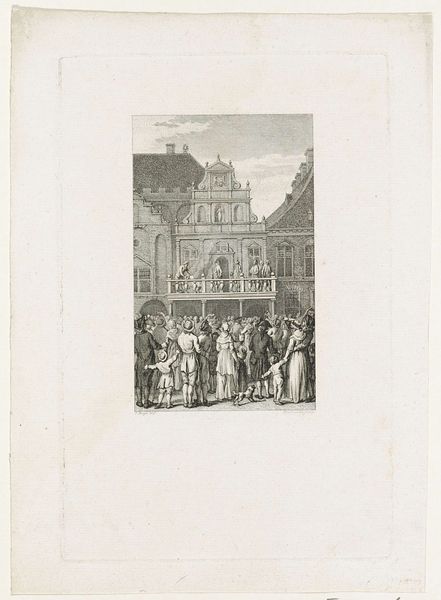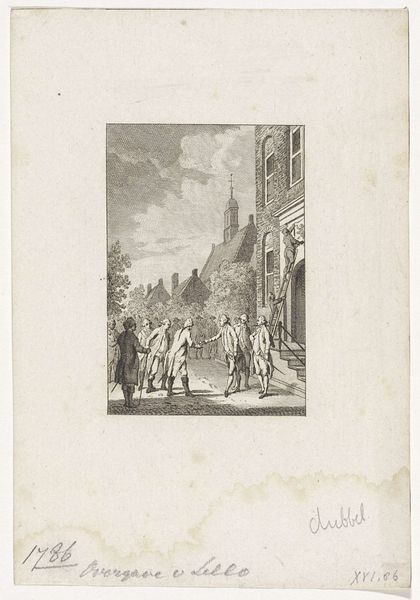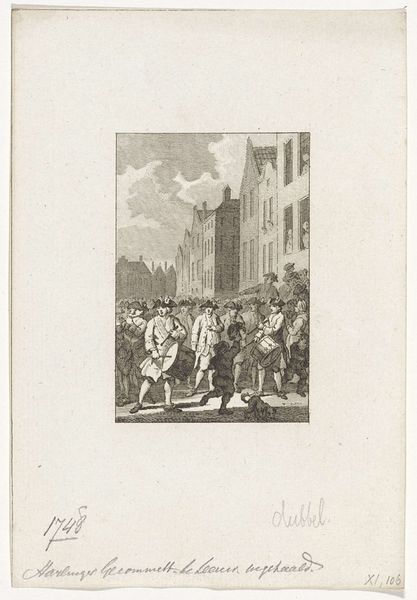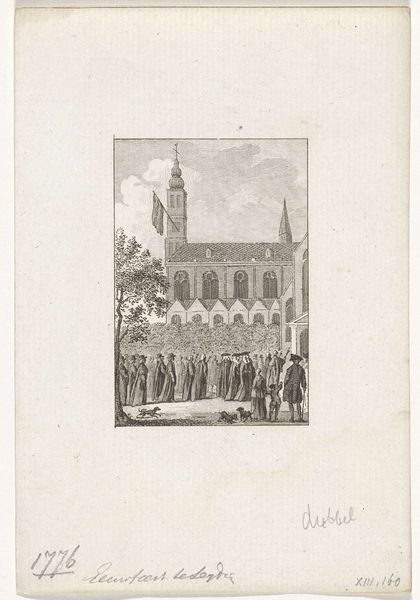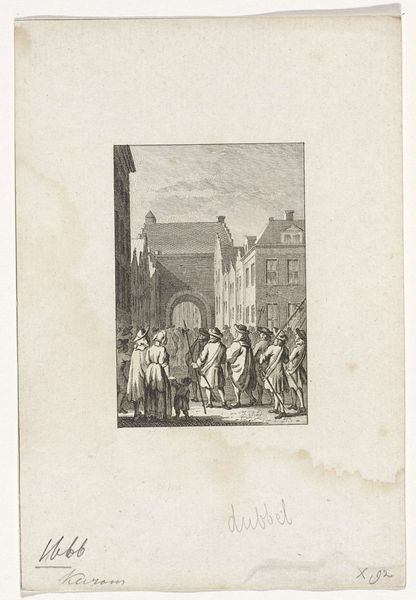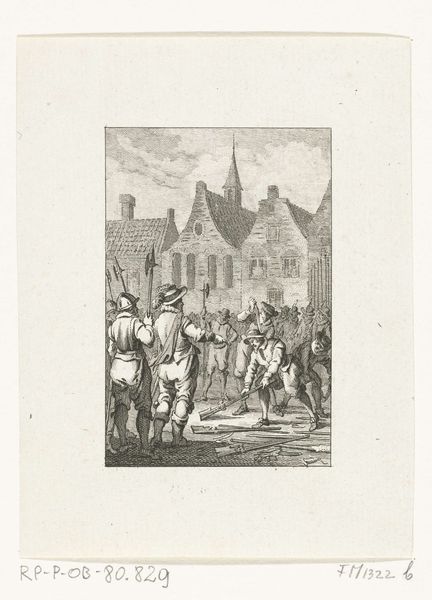
print, engraving
#
neoclacissism
# print
#
old engraving style
#
cityscape
#
genre-painting
#
history-painting
#
engraving
Dimensions: height mm, width mm
Copyright: Rijks Museum: Open Domain
Curator: Here we have "Onrust te Utrecht, 1787" by Reinier Vinkeles. It's an engraving, placing it firmly in the printmaking traditions of the late 18th century. What catches your eye about this image? Editor: My first thought is...restless! Even without knowing the title, the jostling figures convey a sense of unease. It's almost chaotic, yet somehow meticulously rendered. What’s happening here, historically? Curator: Precisely! This engraving depicts unrest in Utrecht in 1787, a period of political upheaval in the Netherlands. It’s important to understand this piece in the context of the Patriot movement, which sought democratic reforms and challenged the power of the Stadtholder, William V. Editor: So the ‘unrest’ is literal. But what are we seeing in terms of identity? Are these distinct social groups clashing, and is Vinkeles making a particular statement? Curator: Yes, this visualizes a society deeply divided. You see armed citizens confronting civilians, implying a direct clash of ideologies. Vinkeles himself, while creating images for various political factions, here captures the anxieties of a society on the brink of revolution, thus questioning authority. The power of print made it possible to influence public opinion, rendering even ostensibly objective scenes implicitly biased. Editor: It’s fascinating how the crisp neoclassical style contrasts with the unruly subject matter. Did the print format perhaps sanitize what must have been a messy reality? It is art acting as social commentary, a record and political tool. Curator: Absolutely. The controlled lines and ordered composition—typical of neoclassical art—present a somewhat rationalized view of events. Print culture then was all about dissemination. This allowed for controlled images circulating amongst the populace. However, one must question whose voices are truly elevated. Did engravings like these empower marginalized groups, or mainly amplify the discourse of the established middle classes? Editor: It's a critical question. By examining the social climate and the modes of communication at the time, one can delve deeper into power dynamics and the narrative framed within. It is important to know who controlled the means of communication, which social strata participated in and benefitted from it. Curator: Understanding the broader historical, socio-political context allows a greater perception of the subject, style, and, indeed, its silences, too. Editor: I agree; viewing art as embedded in larger narratives allows an exploration beyond surface level perception. It transforms the piece from a mere image into a lens for the understanding of crucial moments.
Comments
No comments
Be the first to comment and join the conversation on the ultimate creative platform.

